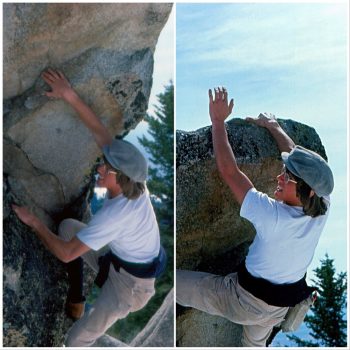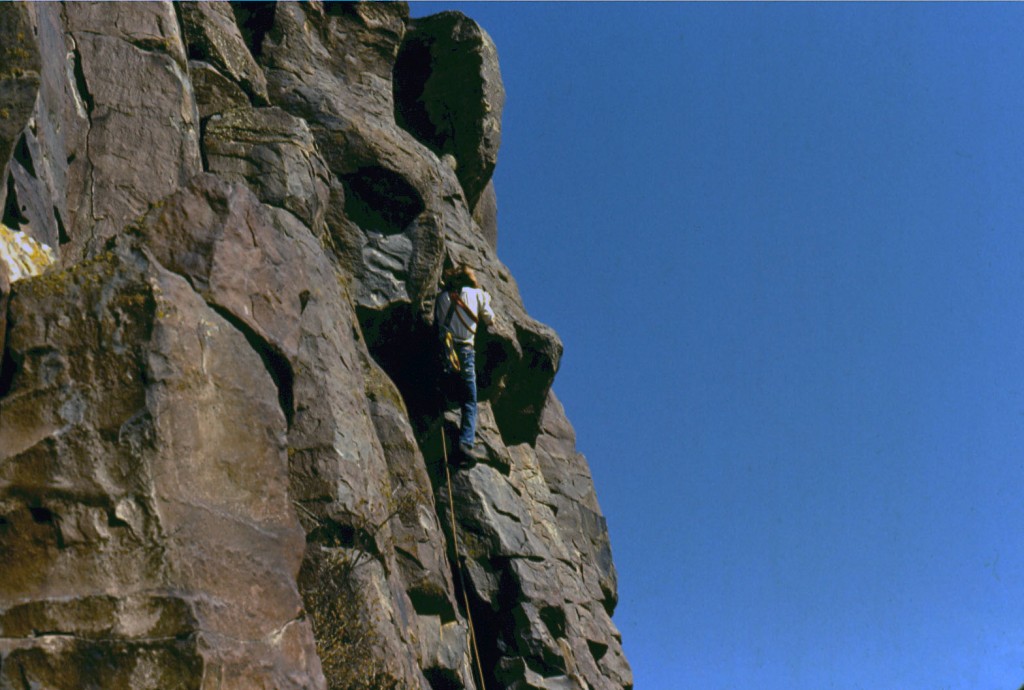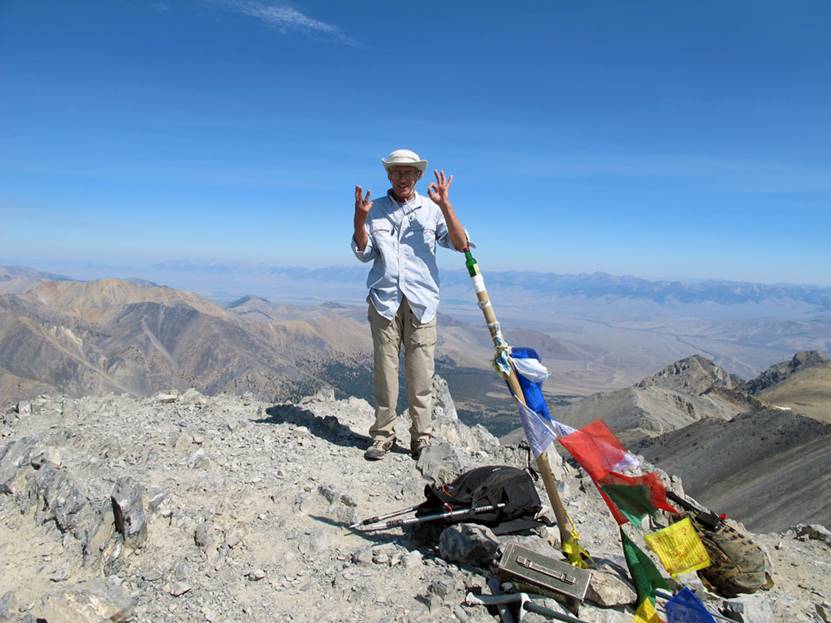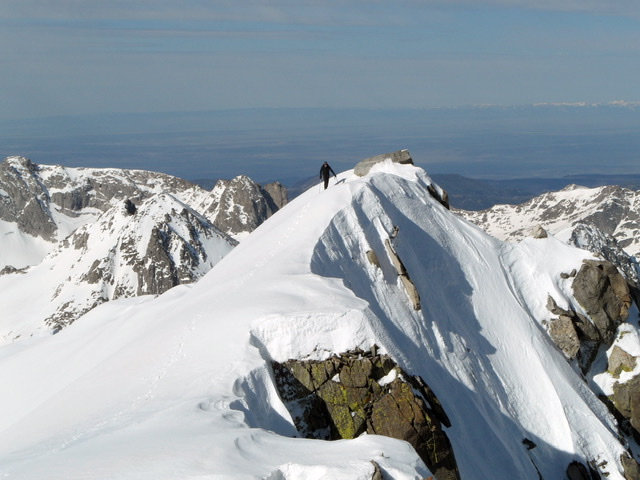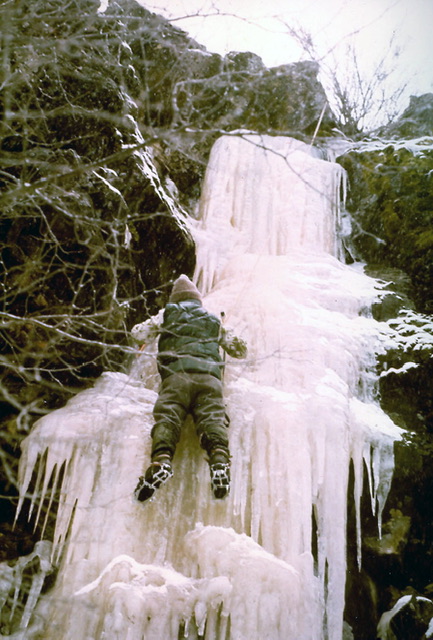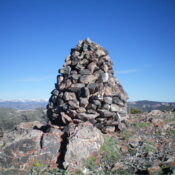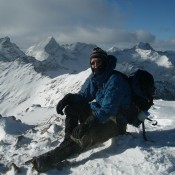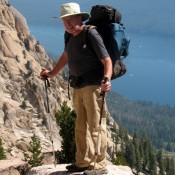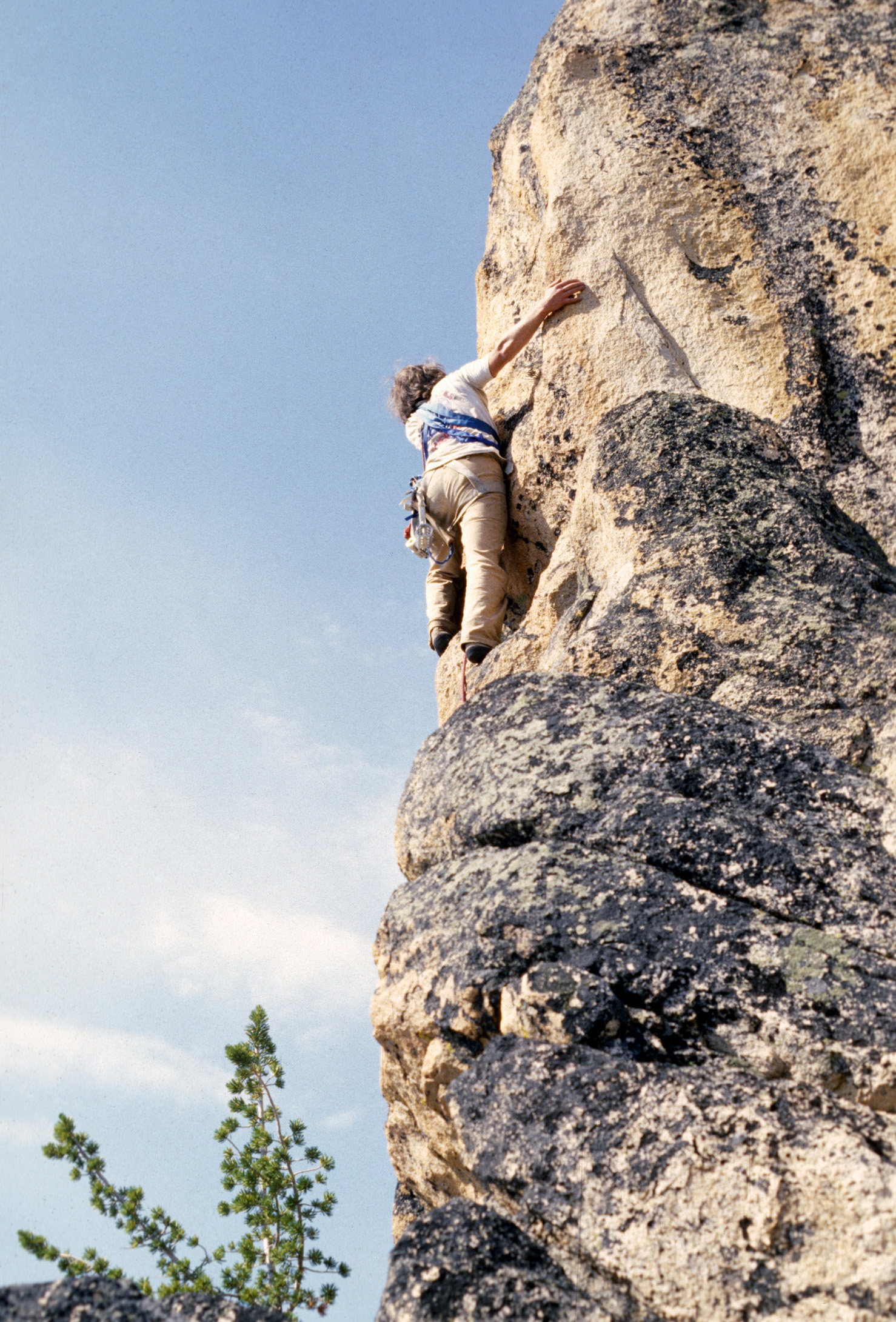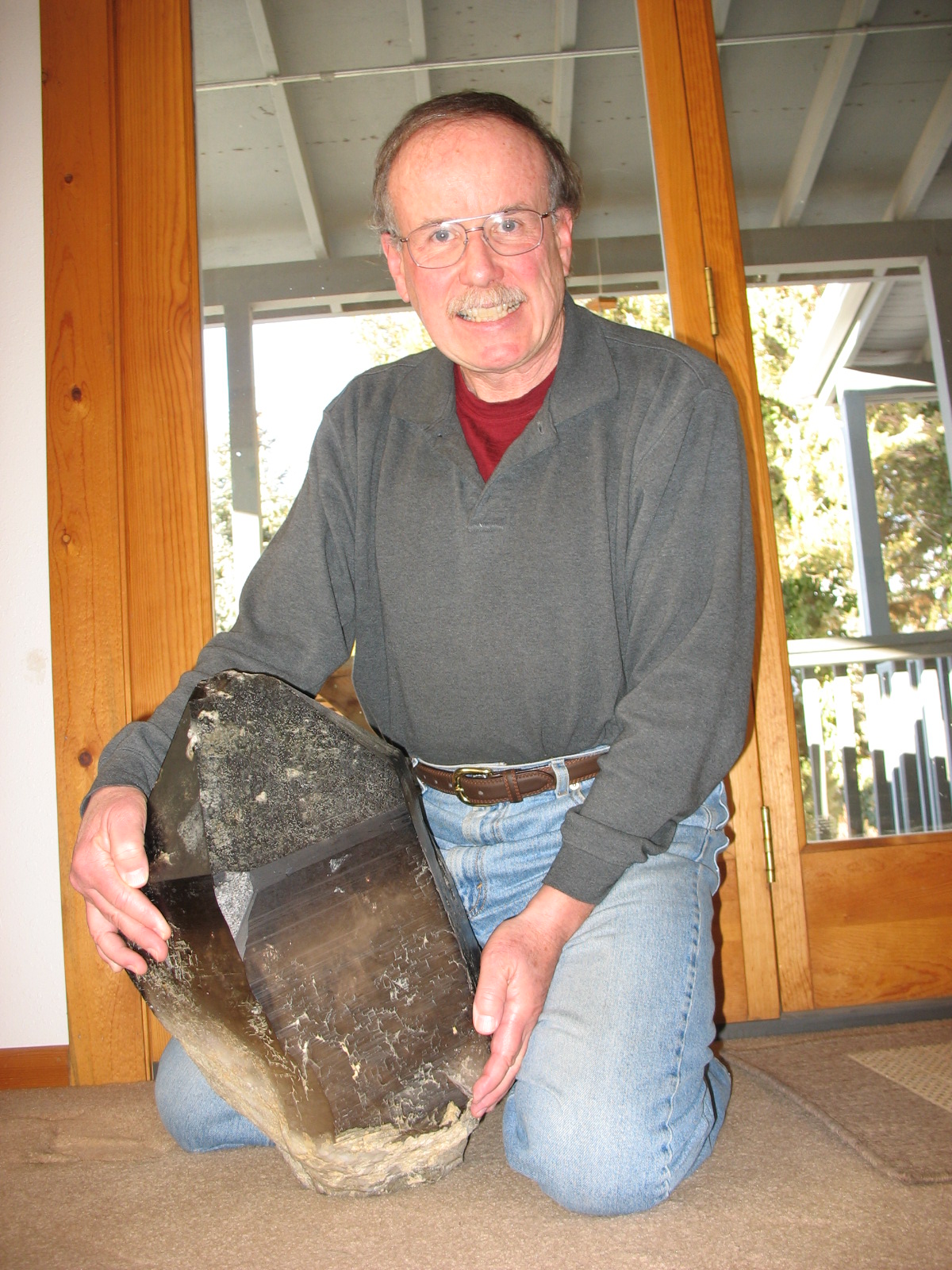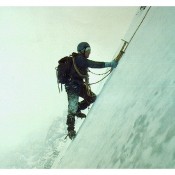
Bob grew up in Boise and started hiking and camping in Idaho when he joined the local Boy Scout Troop 77 at age 11. In pursuit of his Hiking Merit Badge, Bob learned about the “ultimate” local scout hike: the 50-miler through the Sawtooth Range. While his Troop never organized such a trip, he and his friends did. He later made several crossings of the entire range, including several in Winter on skis.
In Summer 1972, Bob took his first technical rock climbing class at the Table Rock quarry where he honed his rock climbing skills and shortly after started exploring and climbing at the Black Rocks outside of Boise. Not wanting to hang up their climbing gear in Winter, Bob and his friends started ice climbing in the canyon above ID-21 in Winter 1973. He remembers, “People used to beep their horns at us and stop in the middle of the highway to watch these crazy guys sticking to the short, vertical ice formations that formed in the canyon. One thing led to another, and after getting a tip from a friend who farmed near Twin Falls, we spent a couple of Winters climbing the multi-pitch ice formations in the Snake River Canyon. That was scary stuff and we’re lucky we didn’t get killed or injured using our primitive 70cm ice axes and alpine hammers on vertical ice.”
Throughout the 1970s and 1980s, Bob and his friends treated climbing and skiing like a career and ventured throughout the West in pursuit of new objectives. From 1973-1983, he made annual Summer trips to the Tetons, climbing many of the big peaks in the range. Other trips led to the Cascade volcanoes, Yosemite, the North Cascades, the Canadian Rockies and the Sawtooth and Lost River Ranges. Marriage, two children and a 24-year career at Hewlett Packard slowed down Bob’s climbing pursuits but never stopped them.
In 2013, Bob made his 30th ascent of Mount Borah at age 60. As such, Bob is the undisputed Dean of Borah climbers. He recalls, “I had just turned 60 so I had to get that Number 30 out of the way. After 1973, I made sure that I climbed it on my decade years of 1983, 1993, 2003, and 2013 when I was 30, 40, 50 and 60. As for 70, ha, who knows? Why do I keep doing it? It’s a personal physical test and I figure that if I can’t make the summit of Mount Borah then my days of doing this kind of stuff are coming to an end for good. Every year, I’ve been pleasantly surprised that the grind and the altitude hasn’t bothered me (yet). I tell everyone when I climb now that someday I might just turn around on a trip and say “screw it” for good. Heck, I’m going to be 62 next year and it keeps getting harder to find anyone in my age group to go with.”
Bob has also made many significant climbs in the Tetons. He has climbed the Grand Teton seven times by three different routes, Mount Moran twice by two different routes, Symmetry Spire, Guides Wall on Storm Point, Baxter’s Pinnacle, and Teewinot. He has free soloed Teewinot and the Grand Teton via the Exum Ridge.
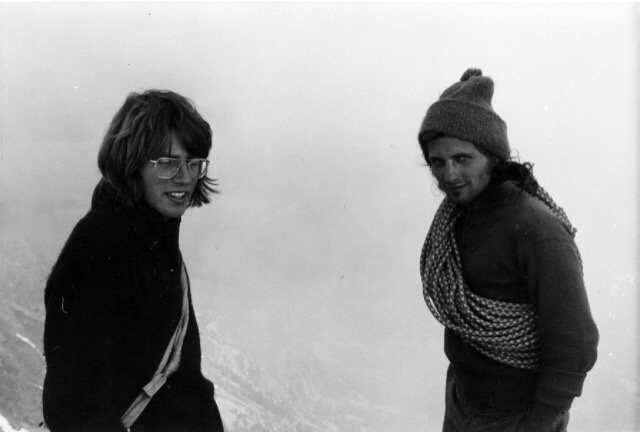
and Mike Weber on the summit of the Grand Teton after after finishing our free solo of the Upper Exum ridge (Aug 1974). We didn’t uncoil the rope until we reached the rappel to the Upper Saddle.
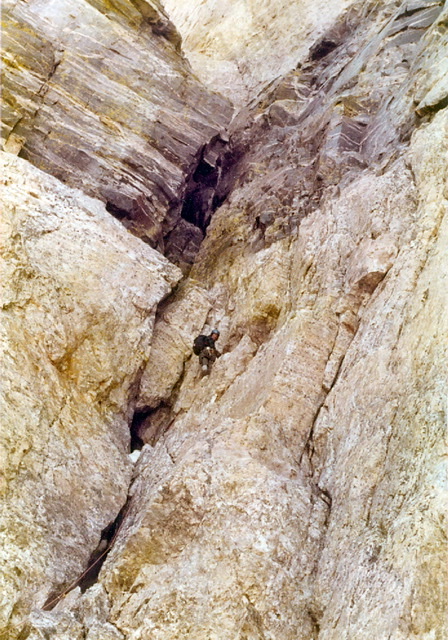
Bob leading the chimney pitch on the North Ridge of the Grand Teton. Aug, 1978. Photo by Carl Sheets
Bob, both as a pioneering Idaho climber and a climbing historian, has contributed many articles and photos to this website. Here are links to several of his articles:
- The Early Climbing History of the Black Cliffs
- The Early Climbing History at Table Rock
- 1977 Borah North Face First Winter Ascent
- The First Ascent of the North Face of Mount Breitenbach
- The East Face of Mount Borah
- Mount Borah, North Face Direct
- Mount Borah – Overview of Climbing Routes
- The End of the Last Idaho Ice Age
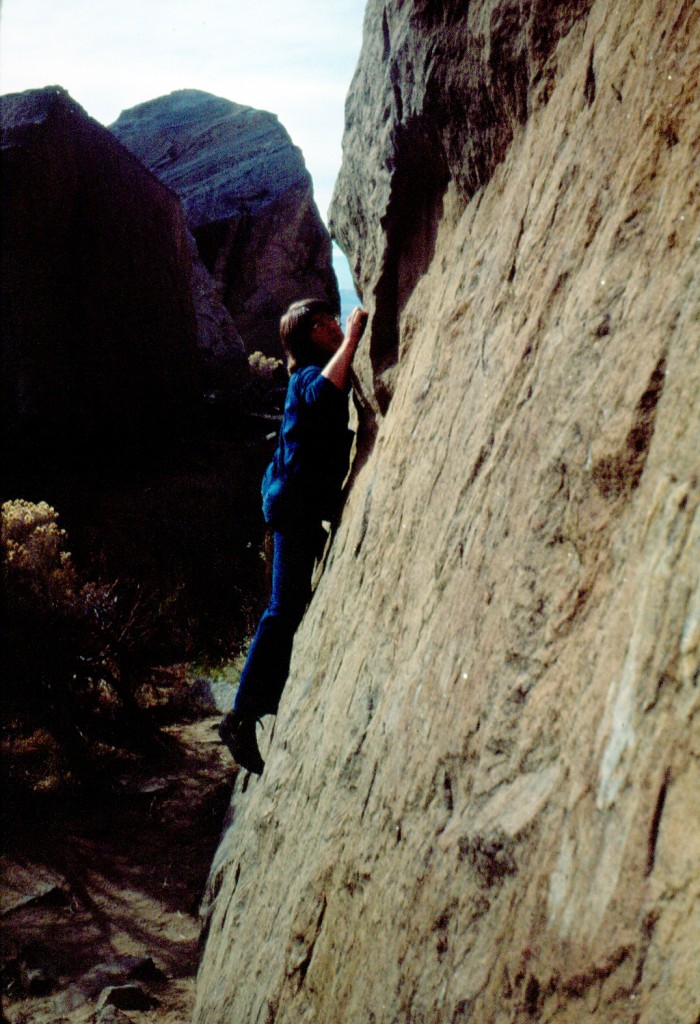
Bob working a classic mid-cliff slab in blue jeans and Fabiano Directisma “blue boots” as we called them. They were totally rigid from heel to toe, making them terrible for walking but they worked perfectly on the tiny nicks and chips in the quarried rock. Mike Weber Photo
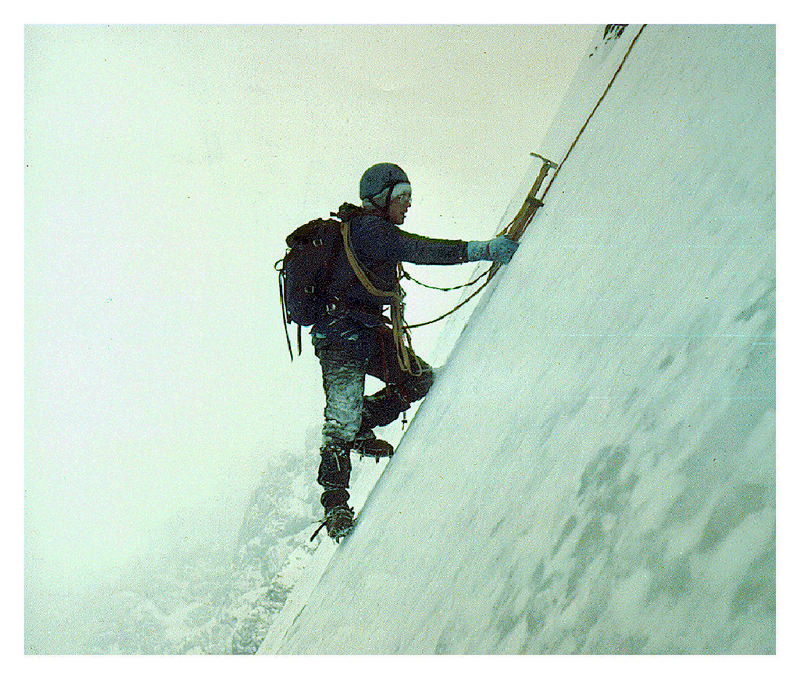
Bob Boyles supplied this photo. It is the only photo that his team took on their Winter ascent of the North Face of Borah in January 1977. Frank Florence Photo
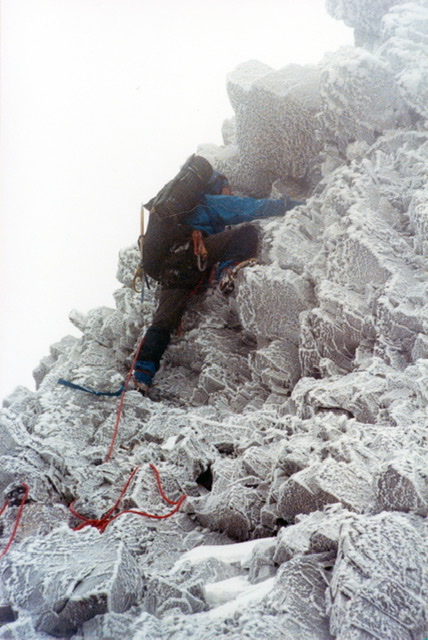
Bob climbing the direct finish of the North East ridge on Borah. September, 1990. Photo by Curt Olson

Mores Creek canyon when the ice used to form off of HW21. They built houses up on the rim and altered the drainage so I never see them anymore. The first one is me leading a flow and the second. Bob Boyles Photo
